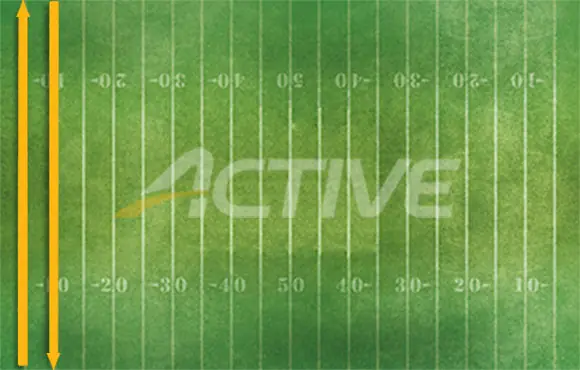10K Training Tool #3: Fartlek Workouts
Fartleks, a Swedish word meaning speed play, are another great form of training for the 5K and 10K distances. These runs are similar to traditional interval training, but differ in the fact that fartleks are unstructured—intensity and speed vary. I prefer to go off of time instead of distance for fartlek runs.
A good beginner fartlek workout is to warm up like you would for intervals or tempo runs, but then run hard for 1 minute, then run easy for 2 to 3 minutes or longer. The longer recovery will help you run the minute faster. Don't worry about how far you go in the minute hard; just go as close to all-out sprinting as you can for the minute hard. In terms of pace, the hard minutes should be faster than 10K and 5K pace, and closer to mile pace.
More: 6 Fartlek Workouts for 3 Training Phases
Once you get used to fartleks you can decrease your recovery time. You can progress to 1 minute hard, 1 minute easy for 30 to 40 minutes. You can also add in longer segments such as 3 minutes fast, 2 minutes easy recovery. You could also do a ladder where you go 1 minute hard, 1 minute easy, 2 minutes hard, 2 minutes easy, 3 minutes hard, 3 minutes easy, and then come back down the ladder. Since fartleks vary, feel free to customize them and play with the intensity and time. You should cool down the same as you would for a tempo or interval workout.
More: Beat the Competition at Your Next Race With Fartlek Workouts
10K Training Tool #4: Strength Training
Adding some strength work to your training will also benefit 10K runners. Runners tend to benefit most from lighter weights with higher repetitions and less rest between sets. This focuses on muscular endurance rather than trying to pump heavy weights and bulk up. Great strengthening exercises include push-ups, pull-ups, chest press, leg press, leg curls, squats, pull down and row. Focus on all of the major muscle groups. You can do strengthening workouts on your easy or off days from running. I would recommend just two days per week of strength training.
More: 4 Essential Strength Moves for Runners
10K Training Tool #5: Progression Runs
Progression runs are a great way to get your body used to running faster when you are tired, and have already run several miles. During progression runs, you pick up the pace each mile until you peak at near race pace or faster for the final mile. You would warm up and cool down the same as you would for tempos, intervals and fartleks. A sample progression run would be 1 to 2 miles easy, 3 miles progression where you get faster each mile, and then 1 to 2 miles easy. You can dictate how much time to drop each mile, but each mile should be faster than the previous mile.
More: 3 Progression Runs to Reach Race-Day Success
10K Training Tool #6: Easy Runs
Easy runs and long runs are still important to 10K training, as they are to any distance. Easy runs should be done at a comfortable pace. If you're running with someone and can't carry on a conversation, then you are doing your easy run too fast. For those who use heart rate monitors, you should keep your heart rate between 65 to 75 percent of your max. Doing easy runs too fast will hamper your body's ability to recover from harder workouts.
More: 3 Rules for Easy Runs
10K Training Tool #7: Long Runs
If you are a beginner, long runs of 6 to 10 miles are fine. If you're not used to running that far, slowly increase your distance until you can. Running longer than the race distance will build endurance, which will help you run the shorter race distance faster.
More: 3 Long Run Principles to Remember
For runners used to doing longer long runs, keep doing them. Anywhere from 10 to 13 miles is sufficient for 10K training. Long runs should also be at a comfortable pace. If you're more advanced, you can also do some fast finish long runs. These are long runs where you run the majority of the run easy but accelerate to near race pace for the final quarter of the workout.
The 10K is a great distance. Training for a 10K will make you a stronger runner and probably faster in the 5K as well. Having more strength, endurance, and being able to hold a pace longer will have you ready to consider half marathons.
More: 7 Training Tips for Your First Half Marathon
 Sign up for your next 10K race.
Sign up for your next 10K race. - 2
- of
- 2
About the Author










Discuss This Article